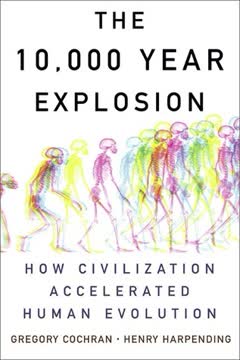Key Takeaways
1. Civilization Accelerated Human Evolution
We intend to make the case that human evolution has accelerated in the past 10,000 years, rather than slowing or stopping, and is now happening about 100 times faster than its long-term average over the 6 million years of our existence.
Challenging Conventional Wisdom. The book refutes the long-held belief that human evolution ceased with the advent of culture, arguing instead that it has accelerated dramatically in the last 10,000 years. This acceleration is attributed to geographic expansion, cultural innovation, and the selective pressures they created. The authors propose that humans have changed significantly in both body and mind over recorded history, implying that individuals from ancient civilizations like Sargon and Imhotep were genetically different from modern humans.
Evidence from Domestication. The rapid changes observed in domesticated animals and plants serve as compelling examples of how quickly evolution can occur. Dogs, for instance, have diversified into a wide array of breeds with distinct physical and behavioral traits in a relatively short period. Similarly, corn has undergone dramatic transformations from its wild ancestor, teosinte, in just a few thousand years.
Simple vs. Complex Adaptations. While the evolution of entirely new complex adaptations may be unlikely in such a short timeframe, simple adaptations involving changes in one or a few genes can still have significant effects. These "evolutionarily shallow" changes, such as the loss of function or exaggeration of existing traits, can lead to substantial differences between populations. The authors contend that human populations have become increasingly dissimilar as they have adapted to diverse environments and lifestyles.
2. Neanderthal Genes May Have Contributed to Modern Human Innovation
There is no faster way of acquiring new and useful genes.
Introgression as a Catalyst. The book posits that the "human revolution" of the Upper Paleolithic was fueled by introgression, the transfer of alleles from Neanderthals to modern humans. This process provided a rapid influx of new and potentially advantageous genes, accelerating the development of new capabilities. The authors challenge the prevailing view of Neanderthals as backward, arguing that they possessed valuable adaptations to local conditions in Europe.
Interfertility and Selective Advantage. Despite common misconceptions, modern humans and Neanderthals were likely interfertile, and even rare instances of interbreeding could have had significant evolutionary consequences. Advantageous Neanderthal alleles, particularly those related to cold tolerance, disease resistance, or cognitive abilities, would have been rapidly selected for and spread through the modern human population.
Skeletal and Genetic Evidence. While skeletal evidence of Neanderthal admixture is debated, recent genetic studies provide compelling support for the introgression hypothesis. These studies have identified unusual patterns in the human genome, such as long haplotypes and genes with recent selective sweeps, that suggest the incorporation of archaic human alleles. Genes related to brain size and speech, such as microcephalin and FOXP2, are particularly intriguing candidates for Neanderthal contributions.
3. Agriculture Intensified Natural Selection
Agriculture created many new problems, but it created even more new solutions.
A New Way of Life. The advent of agriculture marked a profound shift in human history, leading to new diets, increased disease exposure, and altered social structures. These changes created a mismatch between humans and their environment, generating strong selective pressures for adaptation. The authors argue that agriculture led to a vast population expansion, which greatly increased the production of adaptive mutations.
Dietary Adaptations. Early farmers faced nutritional challenges due to their reliance on a limited range of crops. Natural selection favored individuals with genetic variants that improved nutrient extraction, compensated for vitamin deficiencies, and mitigated the negative effects of high-carbohydrate diets. Lactose tolerance, a mutation that allows adults to digest milk, is a prime example of a dietary adaptation that spread rapidly in certain populations.
Regional Variations. The evolutionary response to agriculture varied across different populations, depending on the timing of adoption, the types of crops cultivated, and the degree of genetic isolation. Populations with a longer history of agriculture, such as those in the Middle East, have likely undergone more thorough adaptation to agricultural diets. In contrast, groups that remained foragers or adopted agriculture more recently, such as Australian Aborigines and many Amerindians, exhibit greater susceptibility to modern Western diets.
4. Agriculture Led to New Social Structures and Selective Pressures
The sedentary lifestyle of farming allowed a vast elaboration of material culture.
From Egalitarianism to Hierarchy. Agriculture's sedentary lifestyle and storable food surpluses led to the accumulation of wealth and the emergence of nonproductive elites. This new social structure created selective pressures for traits that facilitated submission to authority and success within hierarchical societies. The authors suggest that humans may have undergone a process of "domestication," becoming tamer and more docile.
The Malthusian Trap. Agriculture's increased food production was often offset by population growth, leading to a Malthusian trap where living standards remained low. Factors such as war, infectious disease, and famine limited population size, and the dominant limiting factor influenced the direction of natural selection. In societies where famine was prevalent, selection favored metabolic efficiency, while in those where infectious disease was the primary constraint, selection favored disease resistance.
Bourgeois Virtues. Agriculture also selected for personality traits associated with success in farming and trade, such as the ability to defer gratification, accumulate property, and work diligently. These "bourgeois virtues" became increasingly important as societies transitioned from foraging to farming, shaping the distribution of cognitive and personality traits in different populations.
5. Gene Flow Facilitated the Spread of Adaptive Alleles
If it's going to be important, if it's ever going to influence a significant fraction of the human species, it must first spread.
The Importance of Mixing. The book emphasizes that for a new mutation to have a significant impact, it must spread beyond its initial population. Gene flow, the movement of alleles between populations, is crucial for this process. The authors explore various mechanisms of gene flow, including local marriage, trade, and migration.
Barriers to Gene Flow. Geographic barriers such as oceans, deserts, and mountain ranges can impede gene flow. Cultural and social factors, such as language differences and hostility between groups, can also limit the exchange of genes. The authors highlight the role of trade in overcoming these barriers, as it creates incentives for travel and interaction between distant populations.
Historical Patterns of Gene Flow. The book examines specific historical events that facilitated gene flow, such as the colonization of the Mediterranean by Phoenicians and Greeks, the conquests of Alexander the Great, and the forced relocations of peoples by empires. These events led to the dispersal of adaptive alleles across vast distances, shaping the genetic landscape of different regions.
6. Population Expansions Were Often Driven by Genetic Advantages
It's hard to fight biological superiority, and expansions based on such superiority could have gone on far longer than ones based upon cultural advantages, which are ephemeral.
Beyond Cultural Explanations. The book challenges the conventional view that population expansions are solely driven by cultural factors, arguing that genetic advantages can also play a significant role. The authors propose that groups with adaptive alleles that increase fitness, such as disease resistance or improved metabolic efficiency, are more likely to expand at the expense of their neighbors.
The Columbian Exchange. The European conquest of the Americas serves as a stark example of how biological differences can influence historical outcomes. The Amerindians' lack of resistance to Eurasian diseases, combined with the Europeans' superior weaponry and tactics, led to a devastating population collapse and facilitated European colonization.
The Indo-European Expansion. The spread of Indo-European languages across Eurasia may have been driven by the lactose tolerance mutation, which allowed for a more efficient dairying economy and increased carrying capacity. This advantage, combined with a warlike culture, enabled the Proto-Indo-Europeans to expand and displace neighboring populations.
7. Ashkenazi Jews' Intelligence May Be a Result of Unique Selective Pressures
If the parents of the next generation are a little smarter than average, the next generation will be slightly smarter than the current one.
A Recent Phenomenon. The book explores the remarkable intellectual achievements of Ashkenazi Jews, noting their overrepresentation in science, literature, and entertainment. The authors propose that this intellectual prominence is a relatively recent phenomenon, emerging within the last few centuries. They hypothesize that it is the result of unique selective pressures experienced by the Ashkenazim during their sojourn in northern Europe.
The White-Collar Niche. The Ashkenazi Jews were largely restricted to white-collar occupations, such as trade, finance, and estate management. These jobs placed a premium on intelligence, creating strong selective pressures for cognitive abilities. Individuals who were better at these tasks had greater economic success and, consequently, more surviving offspring.
Heterozygote Advantage. The authors suggest that certain genetic diseases common among Ashkenazi Jews, such as Tay-Sachs and Gaucher's disease, may be linked to intelligence through heterozygote advantage. While individuals with two copies of these disease alleles suffer severe health consequences, carriers with one copy may experience cognitive benefits, such as increased neural connections.
8. The Ashkenazi's Unique Genetic Profile
SNPs don't lie.
Genetic Distinctiveness. The book presents evidence that Ashkenazi Jews are a genetically distinct group, separate from both other Jewish populations and the general European population. This genetic distinctiveness is a prerequisite for natural selection to have shaped their unique traits. The authors cite studies that have identified specific genetic markers and disease alleles that are highly prevalent among Ashkenazi Jews.
The Role of Endogamy. The Ashkenazi Jews' long-standing practice of endogamy, or marrying within their own group, has played a crucial role in maintaining their genetic distinctiveness. This social pattern has limited gene flow from outside populations, allowing natural selection to exert a stronger influence on the Ashkenazi gene pool.
A Complex Interplay of Factors. The authors emphasize that the Ashkenazi Jews' intellectual prominence is likely the result of a complex interplay of genetic, cultural, and historical factors. While natural selection may have favored certain cognitive traits, cultural traditions such as literacy and a strong emphasis on education have also contributed to their success.
Last updated:
FAQ
What is The 10,000 Year Explosion by Gregory Cochran and Henry Harpending about?
- Accelerated human evolution: The book argues that human evolution has dramatically accelerated in the last 10,000 years, especially due to the rise of agriculture and civilization.
- Challenging evolutionary stasis: It challenges the common belief that human evolution stopped tens of thousands of years ago, showing that genetic change is ongoing and rapid.
- Interplay of biology and culture: The authors explore how cultural innovations created new selective pressures, leading to significant genetic adaptations in different populations.
- Integration of disciplines: The book combines genetics, anthropology, archaeology, and history to provide a comprehensive view of how civilization has shaped human evolution.
Why should I read The 10,000 Year Explosion by Gregory Cochran and Henry Harpending?
- New perspective on evolution: The book overturns the assumption of evolutionary stasis in humans, revealing that evolution is recent, ongoing, and shaped by culture.
- Interdisciplinary insights: It draws from genetics, history, linguistics, and anthropology, offering a rich, multifaceted understanding of human diversity.
- Relevance to society and history: The book explains how genetic adaptations have influenced major historical events, migrations, and societal developments.
- Challenging conventional wisdom: Readers gain a deeper appreciation for the dynamic relationship between culture and biology, and how it continues to shape humanity.
What are the key takeaways from The 10,000 Year Explosion by Gregory Cochran and Henry Harpending?
- Human evolution is recent and rapid: Evolution has accelerated in the last 10,000 years, especially due to agriculture and civilization.
- Culture drives genetic change: Cultural innovations like farming, urbanization, and new diets created novel selective pressures, leading to rapid genetic adaptation.
- Genetic differences matter: The book demonstrates that genetic differences between populations are functional and have shaped history, not just superficial traits.
- Ongoing evolution: Recognizing ongoing human evolution opens new avenues for understanding disease, cognition, and diversity, challenging outdated dogmas.
How does The 10,000 Year Explosion by Gregory Cochran and Henry Harpending challenge the idea that human evolution has stopped?
- Flawed static environment assumption: The book critiques the belief that a stable environment after the "great leap forward" slowed evolution, showing that humans have faced constant change.
- Observable genetic differences: Modern humans display significant genetic and physical differences across populations, indicating ongoing adaptation.
- Rapid evolution examples: The authors cite cases in both humans and other species where significant evolutionary change occurred in thousands, not millions, of years.
- Genetic history approach: They introduce "genetic history," focusing on how natural selection has shaped gene variants in recent millennia.
What is the significance of agriculture in accelerating human evolution according to The 10,000 Year Explosion?
- Population growth and mutations: Agriculture led to a population boom, increasing the number of mutations and the speed of evolutionary change.
- New selective pressures: Farming introduced new diets, diseases, and social structures, requiring genetic adaptations for survival and success.
- Genetic and cultural co-evolution: The book argues that genetic and cultural evolution reinforced each other, shaping populations differently based on their agricultural history.
- Personality and social behavior: Traits like gratification deferral and cooperation became more advantageous in farming societies, influencing genetic selection.
How does The 10,000 Year Explosion by Gregory Cochran and Henry Harpending explain the role of gene flow and admixture in human history?
- Interfertility and introgression: The book discusses how modern humans and Neanderthals interbred, introducing advantageous alleles into the human gene pool.
- Historical migrations: Movements of peoples, such as Indo-Europeans, Sarmatians, and Vandals, facilitated gene flow and spread adaptive traits across regions.
- Genetic markers and evidence: Studies of mitochondrial DNA, Y chromosomes, and SNPs reveal admixture events and population structure changes over time.
- Adaptive introgression: Even rare interbreeding events could rapidly spread beneficial traits, such as disease resistance or cold tolerance.
What are "genetic switches and knobs" in The 10,000 Year Explosion, and how do they relate to recent human evolution?
- Definition: "Switches and knobs" are genetic changes that turn biological processes on/off or adjust their intensity, such as lactose tolerance or immune responses.
- Shallow evolutionary changes: Most recent adaptations involve single mutations tweaking existing functions rather than creating entirely new traits.
- Significant trait effects: These changes can have major impacts on metabolism, immunity, cognition, and other important functions.
- Population-specific adaptations: Different populations have unique sets of these changes, reflecting their distinct evolutionary histories.
How does The 10,000 Year Explosion by Gregory Cochran and Henry Harpending explain the "big bang" of human culture and innovation in the Upper Paleolithic?
- Biological basis for innovation: The authors argue that the surge in creativity and technology 40,000 years ago was driven by underlying genetic changes.
- Role of introgression: Gene flow from Neanderthals may have introduced advantageous alleles that enhanced cognitive and social abilities.
- Cultural explosion evidence: The period saw new tools, art, trade, and social complexity, indicating a leap in human capabilities.
- Genetic innovation mechanism: The transfer of beneficial genes provided a rapid source of evolutionary change, enabling the "human revolution."
How does The 10,000 Year Explosion by Gregory Cochran and Henry Harpending address the misconception that human genetic differences are "only skin deep"?
- Beyond superficial traits: The book shows that genetic differences affect internal functions like metabolism, immunity, brain development, and hearing.
- Functional variation examples: Genes for lactose tolerance, malaria resistance, and neurotransmitter function have undergone recent selection and vary between populations.
- Impact on history and society: These differences have shaped population-specific adaptations, influencing historical events and cultural developments.
- Not trivial differences: The authors argue that these genetic variations are significant and have real-world consequences.
What are the key examples of accelerated human evolution discussed in The 10,000 Year Explosion by Gregory Cochran and Henry Harpending?
- Lactose tolerance and Indo-European expansion: The spread of the lactase-persistence allele enabled dairying and fueled the expansion of Proto-Indo-Europeans.
- Disease resistance and the Columbian exchange: Europeans' evolved resistance to infectious diseases devastated Amerindian populations, aiding conquest.
- Ashkenazi Jewish intelligence: Selection for intelligence in a unique occupational niche led to higher frequencies of IQ-related alleles and certain genetic diseases.
- Blue eyes and migration: The spread of a single allele for blue eyes illustrates how genetic traits can rapidly disseminate through migration and admixture.
How does The 10,000 Year Explosion by Gregory Cochran and Henry Harpending link recent human evolution to the development of modern science and society?
- Selection on cognitive traits: Agriculture and hierarchical societies favored traits like patience, self-control, and cooperation, enabling complex social organization.
- Phase transitions in society: Small genetic changes increased the frequency of individuals capable of abstract reasoning, facilitating scientific and industrial revolutions.
- Population differences in modernization: Groups with longer agricultural histories adapted biologically to dense societies, explaining disparities in modernization and scientific contributions.
- Genetic basis for societal change: The book suggests that genetic evolution underlies key aspects of modern civilization.
What are the main conclusions and implications of The 10,000 Year Explosion by Gregory Cochran and Henry Harpending?
- Ongoing and accelerating evolution: Human evolution has not stopped but has accelerated due to cultural innovations, especially agriculture.
- Biological change shapes history: Genetic adaptations have influenced major historical events, migrations, and cultural developments.
- Challenging outdated dogmas: The book calls for a new understanding of human diversity, disease, and cognition based on ongoing evolution.
- Future research directions: Recognizing recent evolution opens new avenues for studying human biology, history, and society.
Review Summary
The 10,000 Year Explosion presents controversial theories about recent human evolution, arguing that genetic changes have accelerated since agriculture began. Reviewers appreciate the book's thought-provoking ideas but criticize its lack of scientific rigor and potential racist implications. While some praise its accessible writing and fascinating insights, others find it speculative and poorly supported. The final chapter on Ashkenazi Jewish intelligence is particularly divisive. Overall, readers are split between finding the book enlightening and problematic.
Similar Books
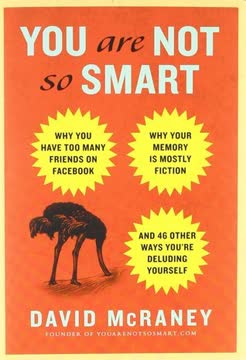
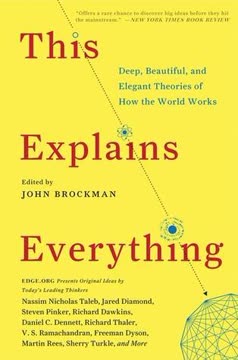

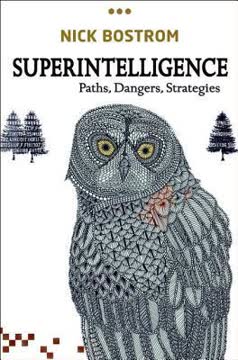


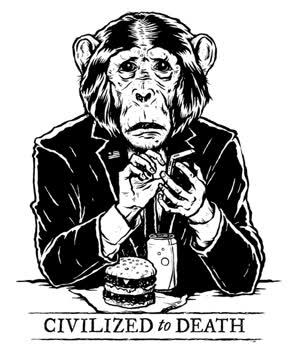
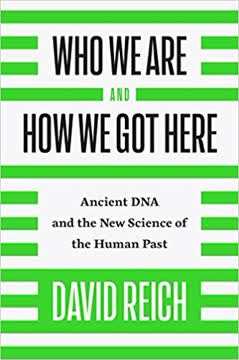


Download PDF
Download EPUB
.epub digital book format is ideal for reading ebooks on phones, tablets, and e-readers.
